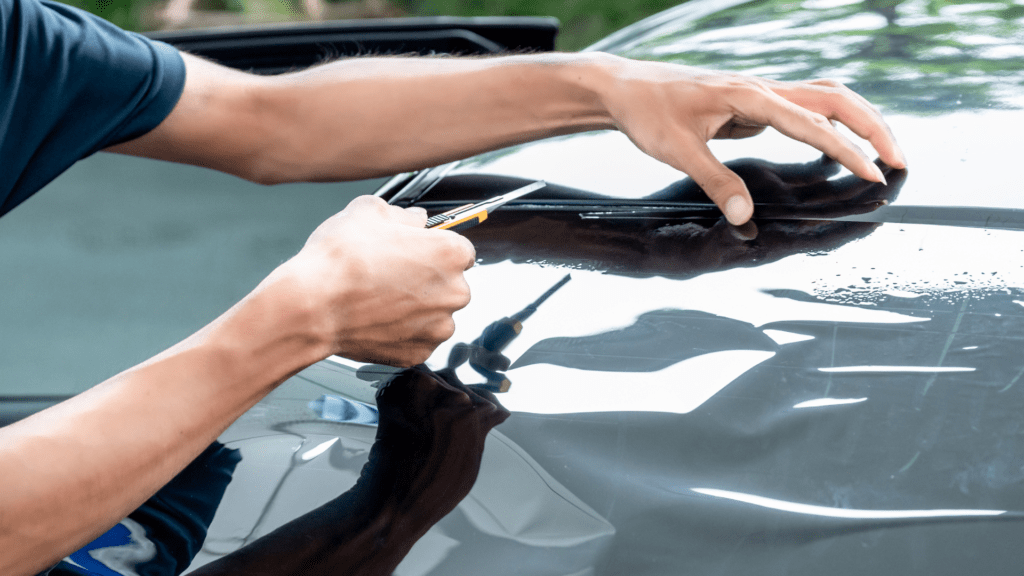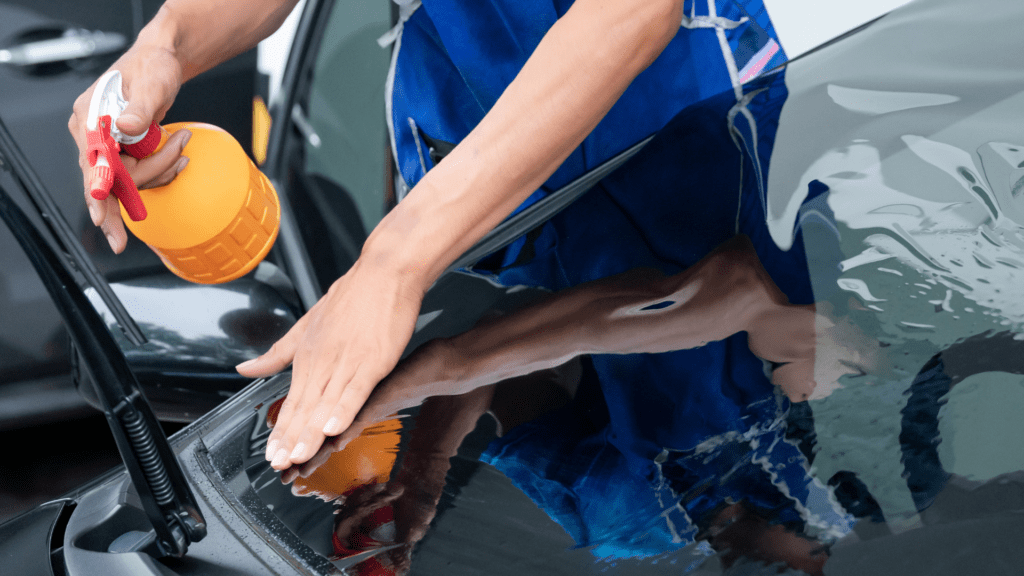Introduction
When you think about window tinting for your car, it’s easy to get confused by terms like 20% tint or 35% tint. What exactly do these percentages mean? Which one is darker, and how do they compare when it comes to privacy, heat protection, and aesthetics?
In this guide, we’ll answer all your questions and provide a thorough comparison between 20% and 35% tinted windows, helping you choose the right tint for your car based on your needs, preferences, and local laws.
What Does Window Tint Percentage Mean?
Before jumping into the differences between 20% and 35%, let’s first define what the percentages represent. Window tint percentage refers to the amount of light allowed to pass through the glass, which is also known as the Visible Light Transmission (VLT).
- 20% Tint: This means that only 20% of visible light can pass through the window, blocking out 80% of light.
- 35% Tint: This means 35% of visible light can pass through, blocking out 65% of light.
Essentially, the lower the percentage, the darker the tint. This means that 20% tint is much darker than 35% tint, and will offer more privacy and shade.
What Does a 20% Tinted Window Look Like?
Darker and More Private
20% tint is often chosen for its dramatic, sleek appearance. With only 20% of light passing through, your windows will look significantly darker compared to a standard, untinted window. From the outside, it’s harder to see into your car, making it a popular choice for people who want added privacy.
Advantages of 20% Tint
Maximum Privacy: With 20% tint, passersby will have a difficult time seeing into your car. This is great if you want to keep the contents of your vehicle private.
Reduces Sun Glare: This tint blocks a significant amount of sunlight, making driving more comfortable during bright, sunny days.
Better Protection from UV Rays: The tint helps protect you and your car’s interior from harmful UV rays, which can cause sunburns and damage to your car’s upholstery.
Sleek Aesthetic: The darker look can give your car a more luxurious, high-end appearance.
Considerations for 20% Tint
- Visibility at Night: While 20% tint is great for privacy during the day, it can reduce your visibility at night. This might be a concern if you often drive in poorly lit areas or at night.
- Legal Concerns: Many states and countries have regulations on how dark window tint can be, especially for the front windows. It’s important to check local laws to ensure that 20% tint is permitted.
- Potential for Safety Issues: In certain cases, darker tints can make it harder for emergency responders or law enforcement to see inside the vehicle during traffic stops, which might be a concern.

What Does a 35% Tinted Window Look Like?
Moderate Darkness with a Balanced Look
On the other hand, 35% tint provides a lighter, more moderate level of darkness. It’s often used for front windows, as it’s still dark enough to provide privacy while allowing more light to pass through compared to 20% tint. If you’re looking for a more subtle yet stylish tint, 35% is a popular option that balances privacy and visibility.
Advantages of 35% Tint
Improved Visibility: 35% tint allows more light to pass through, so you won’t feel as hindered by darkness when driving at night. It provides a more balanced driving experience, especially when compared to 20% tint.
Good Privacy with Subtlety: While it still offers privacy, 35% tint doesn’t make your windows as dark as 20% tint. This means that while it blocks the view from the outside, you won’t sacrifice as much visibility from the inside.
Legal Compliance: In most areas, 35% tint is legal for both front and rear windows, which makes it an ideal choice if you’re concerned about complying with local tinting laws.
UV Protection: Like 20% tint, 35% tint also blocks harmful UV rays, reducing the risk of sun damage to both your skin and your car’s interior.
Considerations for 35% Tint
- Less Privacy than 20% Tint: 35% tint offers decent privacy, but it’s not as effective as 20% tint in terms of blocking the view into your vehicle. If you need maximum privacy, this might not be the best option.
- Aesthetic Preferences: While 35% tint is popular for its more subtle and balanced look, some people may prefer a darker, more aggressive style that 20% tint offers.

How Does 20% Tint Compare to 35% Tint?
Now that we understand what each tint looks like and its benefits, let’s break down the key differences between 20% and 35% tint:
Darkness and Privacy
- 20% Tint: Much darker and provides high privacy. The darker shade makes it hard to see inside the car, even during daylight.
- 35% Tint: Lighter than 20%, providing moderate privacy. You can still see inside the car, especially in bright sunlight.
Visibility
- 20% Tint: Reduced visibility, particularly at night. It may be more difficult to see out of your vehicle in low-light conditions.
- 35% Tint: Better visibility than 20%. It allows more light in, making it safer and more comfortable to drive at night or in darker environments.
Legal Restrictions
- 20% Tint: Often restricted or illegal for front windows in many areas, as it’s too dark for safe driving and visibility.
- 35% Tint: Typically legal in most places for both front and rear windows, making it a safer and more universally accepted choice.
Aesthetic Appeal
- 20% Tint: Bold, dramatic, and high-end appearance. It gives your vehicle a sleek, aggressive look.
- 35% Tint: Subtle and sophisticated. It provides a more balanced look that suits various vehicle types.
Which Tint Is Best for You?
The right tint for you depends on your priorities and preferences. Here’s a quick guide to help you choose:
- Choose 20% Tint if:
- You want maximum privacy and a sleek, bold look.
- You live in a hot climate and need better heat protection.
- You don’t mind reduced visibility at night or low-light conditions.
- You want to block out a significant amount of UV rays.
- Choose 35% Tint if:
- You want a more balanced look that isn’t too dark but still provides decent privacy.
- You need better visibility, especially when driving at night.
- You want to comply with local tinting laws, as 35% is often more acceptable.
- You prefer a more subtle, elegant look without going overboard.
Conclusion
When choosing between 20% and 35% tint, it’s important to consider both aesthetic preferences and practical needs. 20% tint is perfect if you want a darker, more private look, while 35% tint offers a more balanced option with better visibility.
Ultimately, the right choice depends on where you live, how you use your car, and how much privacy you want. Just remember to always check local laws regarding tint percentages to ensure that your choice complies with regulations.
Both tints have their advantages, so choose wisely and enjoy the benefits that come with having tinted windows—whether it’s reducing heat, protecting your skin from UV rays, or simply giving your vehicle a unique look!
FAQs
1. Can I apply 20% tint to my front windows?
In many places, 20% tint may not be legal for front windows due to safety concerns. Always check local tinting laws before applying this level of tint.
2. Is 35% tint sufficient for privacy?
35% tint provides a moderate level of privacy, but if you’re looking for maximum privacy, 20% tint might be a better option.
3. Does 20% tint block more heat than 35% tint?
Yes, 20% tint blocks more heat because it is darker, preventing more sunlight from entering the car. It’s especially beneficial in hot climates.
4. Which tint is better for driving at night?
35% tint is better for driving at night as it allows more light to pass through, providing better visibility. 20% tint can make night driving more difficult due to the reduced light.
5. Can 35% tint be used on front windows?
Yes, in most places, 35% tint is legal for front windows, making it a safer and more widely accepted option compared to
